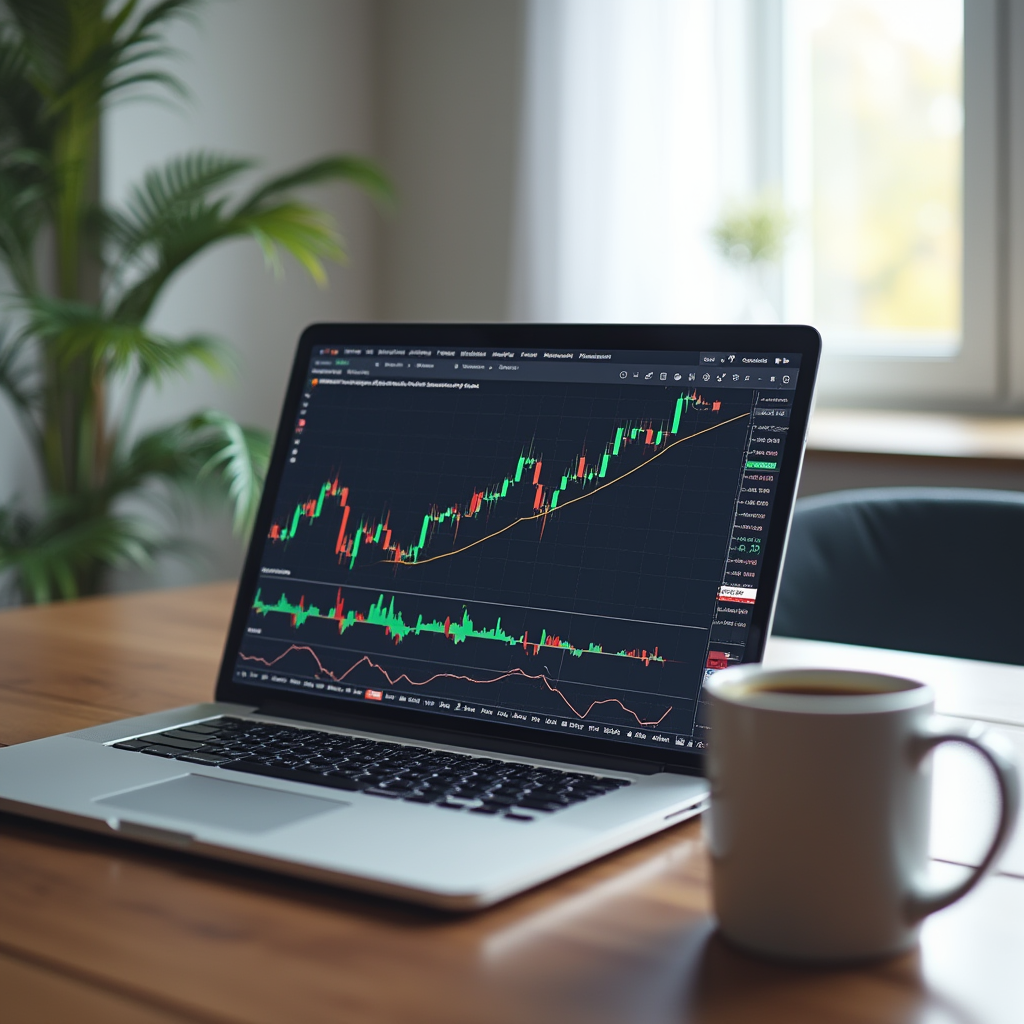Understanding ETFs in the Context of Day Trading
This basket investment gives active traders easy access to a portfolio and the liquidity of stock trading. We shall now elaborate on why intraday trading is apt.

What Is an ETF?
An ETF is a pooled investment vehicle that holds a collection of assets—stocks, bonds, commodities—then issues shares that trade on an exchange. Unlike mutual funds, ETFs move in real time, allowing traders to buy or sell throughout the day at market prices.
How ETFs Work for Intraday Trading
Because ETFs mirror the price moves of their underlying assets, they provide a straightforward way to ride sector trends or market swings. Intraday participants can exploit small price differentials, arbitrage between ETF and NAV, and tight bid-ask spreads to execute rapid trades.
Types of ETFs Suitable for Day Trading
- Broad-Market ETFs (e.g., SPY, IWM): Capture large-cap or small-cap movements.
- Sector & Thematic ETFs (e.g., XLK, XLF): Focus on technology, finance, or niche themes.
- Inverse & Leveraged ETFs (e.g., TZA, SOXL): Amplify directional moves—high reward, high risk.
- Volatility ETFs (e.g., UVXY): Track VIX futures for volatility plays.
Why Trade ETFs Daily?
Day trading ETFs combines the best of both worlds: the breadth of mutual funds with the nimbleness of stocks.
High Liquidity and Tight Spreads
Many ETFs, especially large-caps like SPY and QQQ, trade tens of millions of shares daily. This depth translates to narrow bid-ask spreads, reducing friction costs on frequent entries and exits.
Market Exposure Without Full Ownership
ETFs let you participate in commodities, bonds, or international indexes without the hassles of futures margins or currency conversions. You get instant diversification in a single instrument.
Flexibility and Sector Rotation
Shifting between sectors (technology one day, energy the next) is effortless. You can tactically allocate capital to themes that outperform in specific market conditions.
Risk Management and Volatility Plays
Inverse and volatility-based ETFs offer built-in hedges or contrarian plays. On choppy days, you can switch to safe-harbor instruments or capitalize on panic-driven spikes.
Profitable Day Trading Strategies for ETFs

Successful day traders blend market intuition with proven tactics. Here are some go-to approaches:
Momentum Trading
Identify ETFs making decisive moves on heavy volume. Jump in on breakouts and ride the trend until signs of exhaustion appear (e.g., slowing volume, reversal candlesticks).
Scalping Techniques
Take tiny, frequent profits—often a few cents per share—relying on high volume and razor-sharp execution. Ideal for ultra-liquid ETFs like SPY.
Technical Analysis and Indicators
Combine moving averages, support/resistance levels, and chart patterns to map entry and exit points. Layer indicators (RSI, MACD) to confirm momentum and avoid false signals.
News-Based Trading
React to earnings surprises, macro data releases, or geopolitical headlines. Predefine your reaction (e.g., buy the rumor, sell the news) to prevent emotional overreactions.
Gap and Go Strategy
Target ETFs that open significantly above or below the previous close. Trade in the direction of the gap at the market open, provided volume and volatility confirm the move.
VWAP Reversal Strategy
Use the Volume-Weighted Average Price (VWAP) as a benchmark. Fade extremes—buy when price dips below VWAP after overextension, sell when it rallies too far above.
Best ETFs for Day Trading in 2025
| ETF Symbol | Name | Average Daily Volume | Key Appeal |
| SPY | SPDR S&P 500 ETF Trust | 60M+ | Ultra-liquid, broad U.S. exposure |
| QQQ | Invesco QQQ Trust | 40M+ | Tech-heavy, high volatility |
| FAS | Direxion Daily Financial Bull 3X Shares | 5M+ | Leverage on financials |
| UVXY | ProShares Ultra VIX Short-Term Futures ETF | 10M+ | Volatility plays |
| IWM | iShares Russell 2000 ETF | 20M+ | Small-cap swings |
| ARKK | ARK Innovation ETF | 8M+ | Disruptive-tech themes |
| SOXL | Direxion Daily Semiconductor Bull 3X Shares | 7M+ | Amplified semiconductor moves |
Leveraged ETFs in Day Trading: Opportunities and Risks
Leveraged ETFs amplify returns by using derivatives and debt. They can magnify gains—but losses, too.
What Are Leveraged ETFs?
These funds aim to deliver a multiple (e.g., 2× or 3×) of an index’s daily performance. They reset each night, making them unsuitable for long-term holds but potent for intraday speculation.
Pros and Cons of Trading Leveraged ETFs
- Pros: High return potential, clear directional bias, built-in risk management features.
- Cons: Path-dependence risk, compounding decay over multiple days, wider spreads.
Key Tips for Managing Risk with Leverage
- Keep holding periods short (same-day only).
- Use tight stop-losses to cap downside.
- Limit position size to a small percentage of your account.
Popular Leveraged ETFs for Intraday Traders
- TQQQ (3× Nasdaq 100)
- SOXL (3× Semiconductors)
- FAS (3× Financials)
- SPXL (3× S&P 500)
Tools and Indicators Every Day Trader Should Use

Building a reliable toolkit streamlines decision-making under pressure.
Volume and Volatility Analysis
Monitor real-time volume spikes and volatility surges (e.g., using the VIX or ATR) to confirm trade setups.
Moving Averages and Trend Lines
Plot simple or exponential moving averages (10-, 20-, 50-period) to define trend direction and dynamic support/resistance.
Relative Strength Index (RSI)
Gauge overbought or oversold conditions on a 14-period chart. Look for divergence signals to anticipate reversals.
MACD and Bollinger Bands
- MACD captures momentum shifts via moving average crossovers.
- Bollinger Bands highlight expanding or contracting volatility—ideal for breakout entries.
Real-Time News Feeds and Trading Platforms
Speed matters. Use platforms with integrated news tickers (e.g., Bloomberg Terminal, Reuters Eikon) and one-click order entry to capitalize on fast-moving headlines.
Common Mistakes in ETF Day Trading
Even seasoned pros stumble when rules slip—avoid these pitfalls.
Ignoring Market News
Trading blind to headlines invites surprise gaps. Always scan the economic calendar and news wires before trading.
Overtrading Without a Plan
Random entries erode returns. Define your strategy, risk parameters, and stop levels before clicking “buy.”
Holding Positions Overnight
Leveraged dynamics and after-hours gaps can inflict heavy losses. Stick to intraday windows unless you have a robust hedging plan.
Misunderstanding Leverage
Assuming magnified gains always materialize can be lethal. Respect the math: two-day returns won’t equal double the index’s two-day move.
Conclusion
Key Takeaways for Consistent ETF Day Trading Success
- Select high-liquidity, well-tracked ETFs.
- Time trades around volatility peaks and news events.
- Combine technical indicators with sound risk controls.
- Maintain discipline: plan your entries, exits, and position sizes.
- Review your performance regularly to refine strategies.
Frequently Asked Questions (FAQ)
Can I day trade ETFs with a small account?
Yes—many brokers offer micro-lot or margin accounts. Focus on tight-spread ETFs and control position size to manage risk.
Are ETFs better than stocks for day trading?
ETFs provide built-in diversification, sector exposure, and often tighter spreads. Stocks can spike dramatically but carry single-name risk.
What is the PDT rule and how does it affect ETF traders?
The Pattern Day Trader rule requires a minimum $25,000 account balance to execute four or more day trades in a rolling five-day period. ETFs fall under this rule in U.S. brokerages.
How do taxes work on ETF day trades?
Profits from day trades are taxed as short-term capital gains, typically at your ordinary income rate. Consult a tax professional for personalized guidance.
What are the best trading platforms for ETF day trading?
Look for ultra-fast execution, customizable charting, and integrated news: popular choices include Thinkorswim, Interactive Brokers, and TradeStation.

